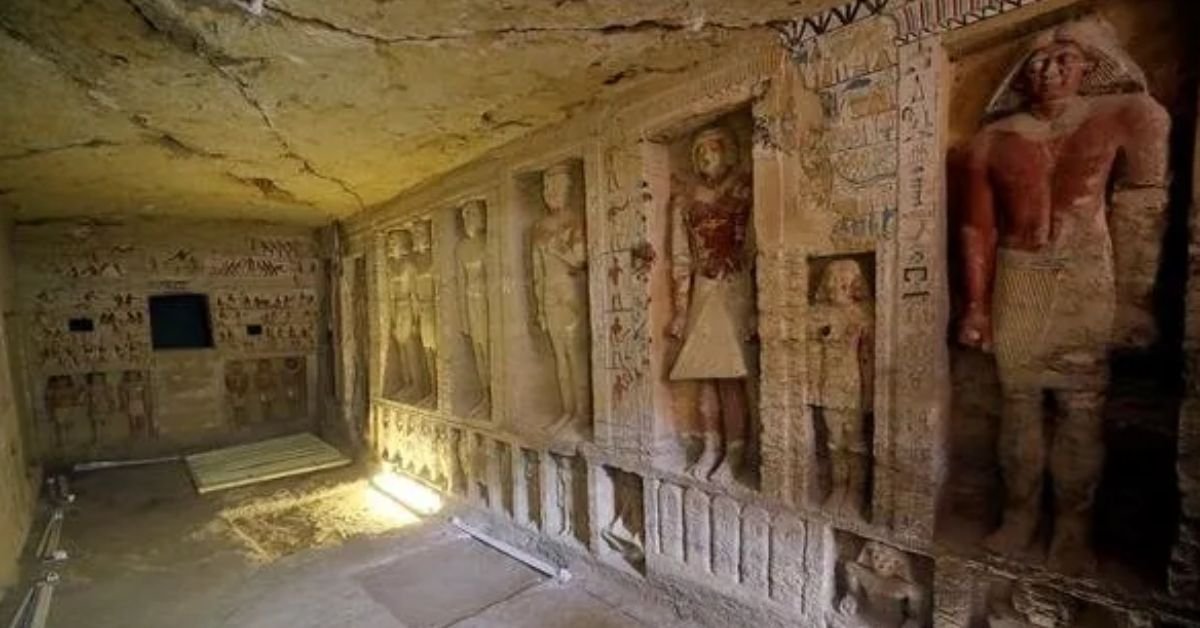Ancient Artz: Tracing the Roots of Human Expression
Art has always been vital to human culture, reflecting life, beliefs, and emotions. Art began as a simple yet profound communication in the earliest periods of human existence.
This article delves deep into the origins of ancient art, examining how early human expression shaped the foundation of today’s artistic practices. From cave paintings to sculptures, the diverse manifestations of ancient art offer an extraordinary window into the minds of our ancestors.
Introduction to Ancient Artz
Ancient artz refers to the early forms of visual expression of ancient civilizations. These artworks were crafted using simple tools and materials but were laden with meaning, serving various purposes—religious, ceremonial, and social. Studying ancient art is more than pursuing beauty; it involves decoding the narratives and emotions conveyed through these creations.
Some earliest examples of ancient art date back tens of thousands of years, from simple cave paintings to more complex sculptures and carvings. Each piece provides clues about how ancient peoples viewed the world, their environment, their gods, and even themselves.
The Purpose of Ancient Artz
In early human societies, art was not merely decorative. It played a crucial role in communication, storytelling, and religious rituals. Without written language, art became the primary medium through which people conveyed ideas, emotions, and historical events. For instance, cave paintings depicting hunting scenes or celestial bodies were not just artistic; they served as records of daily life, beliefs, and cosmic understanding.
Ancient art also held spiritual significance. Many pieces were created as offerings to deities, intended to invoke blessings, ensure good fortune, or commemorate important events. These creations were more than just physical objects; they were imbued with cultural and spiritual significance.
The Origins of Ancient Artz: The Beginnings of Human Creativity
Cave Paintings: The Earliest Forms of Artistic Expression
One of the most fascinating aspects of ancient artz is its humble origins. The oldest known artworks can be found in caves, such as those in Lascaux, France, and Altamira, Spain. These intricate paintings often depicted animals, human figures, and mysterious symbols, providing insights into early human life.
- Lascaux Cave Paintings: Discovered in 1940, these famous Paleolithic cave paintings feature over 600 images of animals like horses, deer, and bulls. The attention to detail and movement captured by early artists is striking, considering their limited tools and pigments.
- Altamira Cave Paintings: Located in Spain, Altamira is another crucial site for ancient cave art. The vibrant depictions of bison, created using natural pigments like ochre and charcoal, reveal artistic talent and a deep connection to the animals that early humans relied on for survival.
Sculpture: From Simple Tools to Complex Forms
In addition to painting, early humans developed sculpture as a powerful artistic medium. These sculptures ranged from small figurines, often depicting deities or fertility symbols, to large-scale monuments honouring leaders and gods.
- Venus Figurines: Small figurines such as the Venus of Willendorf (circa 28,000 BCE) represent fertility and motherhood. These figures are among the earliest known examples of human attempts to depict the human form.
- Monumental Sculptures: Civilizations like Ancient Egypt took sculpture to new heights with creations like the Great Sphinx and statues of pharaohs. These were artistic accomplishments and political statements, conveying rulers’ power and divine status.
Cultural Variations in Ancient Artz
Egyptian Art: A Celebration of Life and Death
In Ancient Egypt, art was deeply intertwined with religion and the afterlife. Egyptians believed in life after death, and their art reflected this belief through tomb paintings, elaborate coffins, and intricate hieroglyphs. The grandeur of the pyramids, statues, and wall paintings all aimed to ensure a prosperous journey to the afterlife.
Egyptian art was characterized by its strict adherence to form and symbolism. Figures were depicted in a highly stylized manner, with the size of each figure indicating their importance. This symbolic art style depicted gods, pharaohs, and ordinary people, emphasizing order and harmony.
Greek Art: The Pursuit of Beauty and Perfection
On the other hand, Greek art celebrated the human form and sought to capture the beauty of the world around them. From the sculptures of gods and athletes to the intricate patterns of pottery, Greek artists strived for perfection in form and proportion.
The Greeks were particularly interested in the human body and sought to portray it in idealized, harmonious proportions. The statues of athletes and gods, emphasizing balance, grace, and movement, best exemplify this pursuit of perfection.
Indigenous Art of the Americas: Nature and Spirituality
In contrast, ancient art from indigenous American cultures focused on nature, animals, and spiritual themes. Artworks such as the Nazca Lines in Peru or the totem poles of the Pacific Northwest were not just decorative but served religious and ceremonial purposes.
In Mesoamerica, the Mayan civilization created intricate sculptures and stone carvings. At the same time, the Nazca people of Peru drew gigantic geoglyphs on the earth, visible only from the sky, depicting animals and geometric shapes. These creations reveal the complex spiritual and social lives of ancient American cultures.
Materials and Techniques Used in Ancient Artz
Natural Pigments and Tools
The materials used in ancient artz were derived from nature. Early artists used minerals, plant dyes, and charcoal to create pigments. These were often mixed with animal fat to create paints that could be applied to stone, wood, or clay. Primitive tools, such as bones and sticks, were used to carve, chisel, and shape materials into art.
Stone and Clay
Stone and clay were widely used in ancient art, especially for sculpture and pottery. Stone was often used for monumental works, like the statues of pharaohs in Egypt or the Moai on Easter Island. Clay was moulded into pottery, which was not only functional but also beautifully decorated with patterns and symbols reflecting the culture of the time.
The Influence of Ancient Artz on Modern Art
The legacy of ancient artz can be seen in many aspects of modern art. From the classical forms of Greek sculptures to the abstract motifs found in indigenous art, ancient traditions continue to inspire artists today. The exploration of human expression, symbolic imagery, and the connection between art and spirituality are all themes that transcend time and continue to resonate in contemporary works.
Many modern artists, such as Pablo Picasso, have drawn inspiration from ancient art. Picasso, for example, was fascinated by African masks, whose abstract forms influenced his development of Cubism.
Frequently Asked Questions (FAQs)
What is the oldest form of ancient artz?
The oldest known form of ancient artz is cave painting, with some of the earliest examples found in the Chauvet Cave in France, dating back over 30,000 years.
Why did ancient people create art?
Ancient people created art for various reasons, including religious rituals, communication, recording events, and expressing their worldview.
What materials were used in ancient artz?
Artists in ancient times created sculptures and carvings using natural pigments from minerals, plants, charcoal, and materials like stone, clay, and wood.
How does ancient artz influence modern art?
Ancient art influences modern art by inspiring symbolism, abstract forms, and exploring the human condition, as seen in movements like Cubism and Abstract Expressionism.
What are some famous examples of ancient artz?
Some famous examples include the Lascaux cave paintings, the Venus of Willendorf, and the pyramids of Egypt.
How were ancient artz techniques passed down through generations?
Ancient art techniques were passed down through apprenticeship, where younger generations learned from master artists and craftspeople within their community.
Conclusion
Ancient artz offers a unique glimpse into the early development of human culture, creativity, and spirituality.
From our ancestors’ simple cave paintings to ancient civilizations’ grand sculptures, these early forms of expression laid the foundation for much of what we understand about art today. By studying ancient art, we can trace the roots of human expression, exploring how our predecessors used creativity to communicate, celebrate, and connect with the world around them.
Ancient artz inspires modern artists, proving the human desire to create and express is timeless.
Latest Post!
- Sco Elcykel Styrebox Explained: Key Features and Benefits
- Tiathabrat: Redefining Streetwear with a Unique Edge
- Michael Schropp MPI: Leading the Evolution of Parallel Processing
- FairwayNomad: Elevate Your Golf Travel Game with This Unique Experience
- Kerîg: What You Need to Know
- Caden Crain: The Entrepreneur Redefining Modern Success












